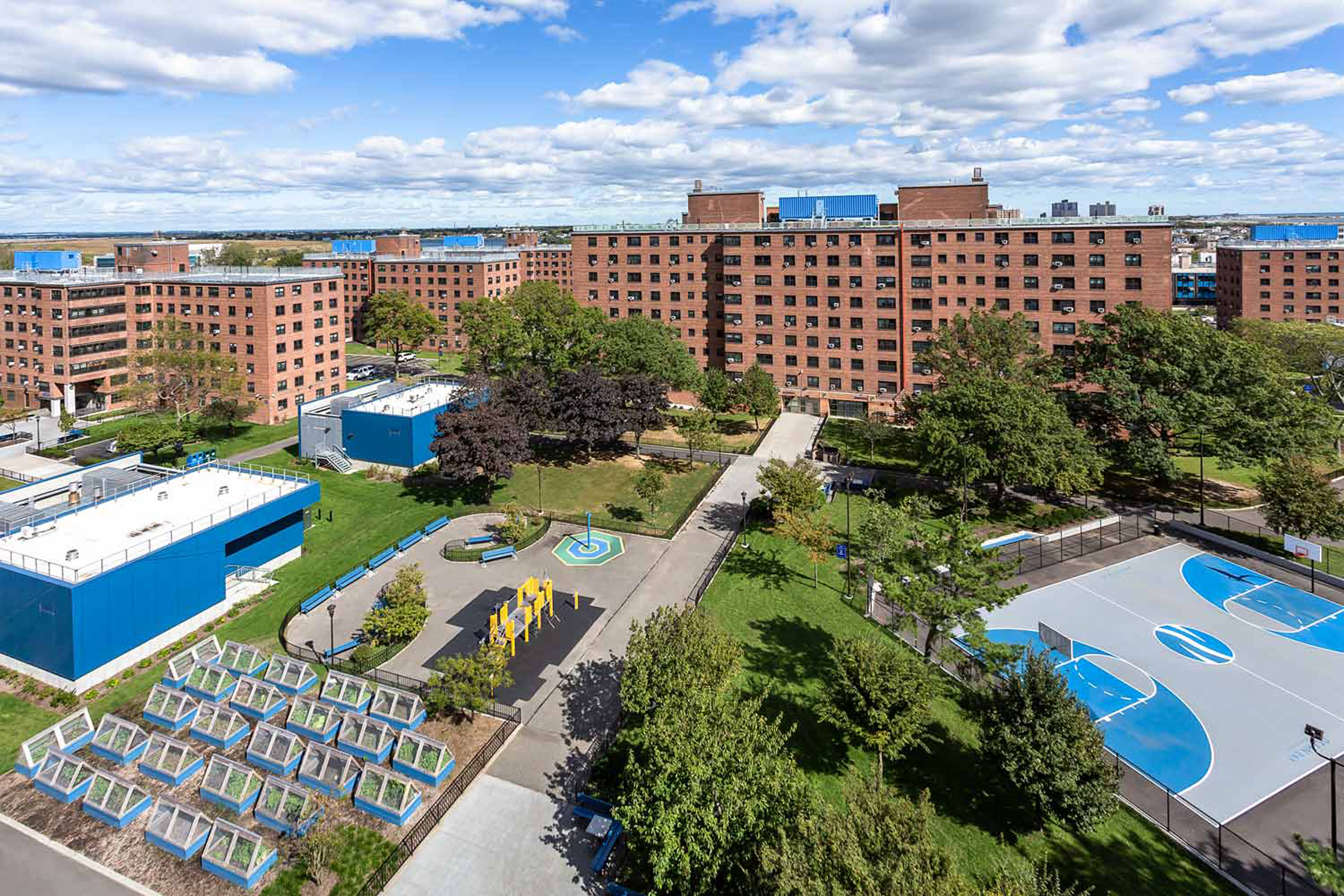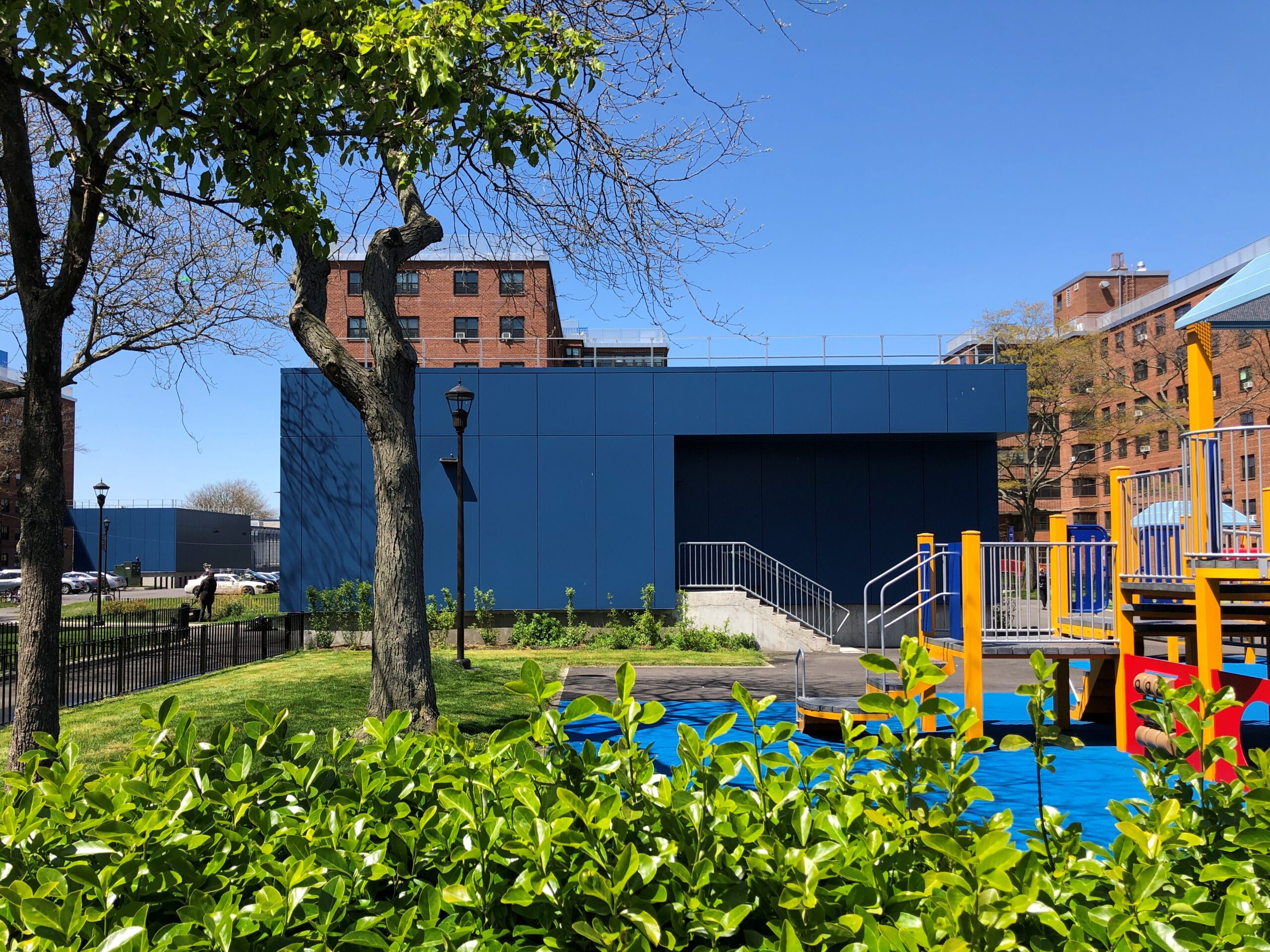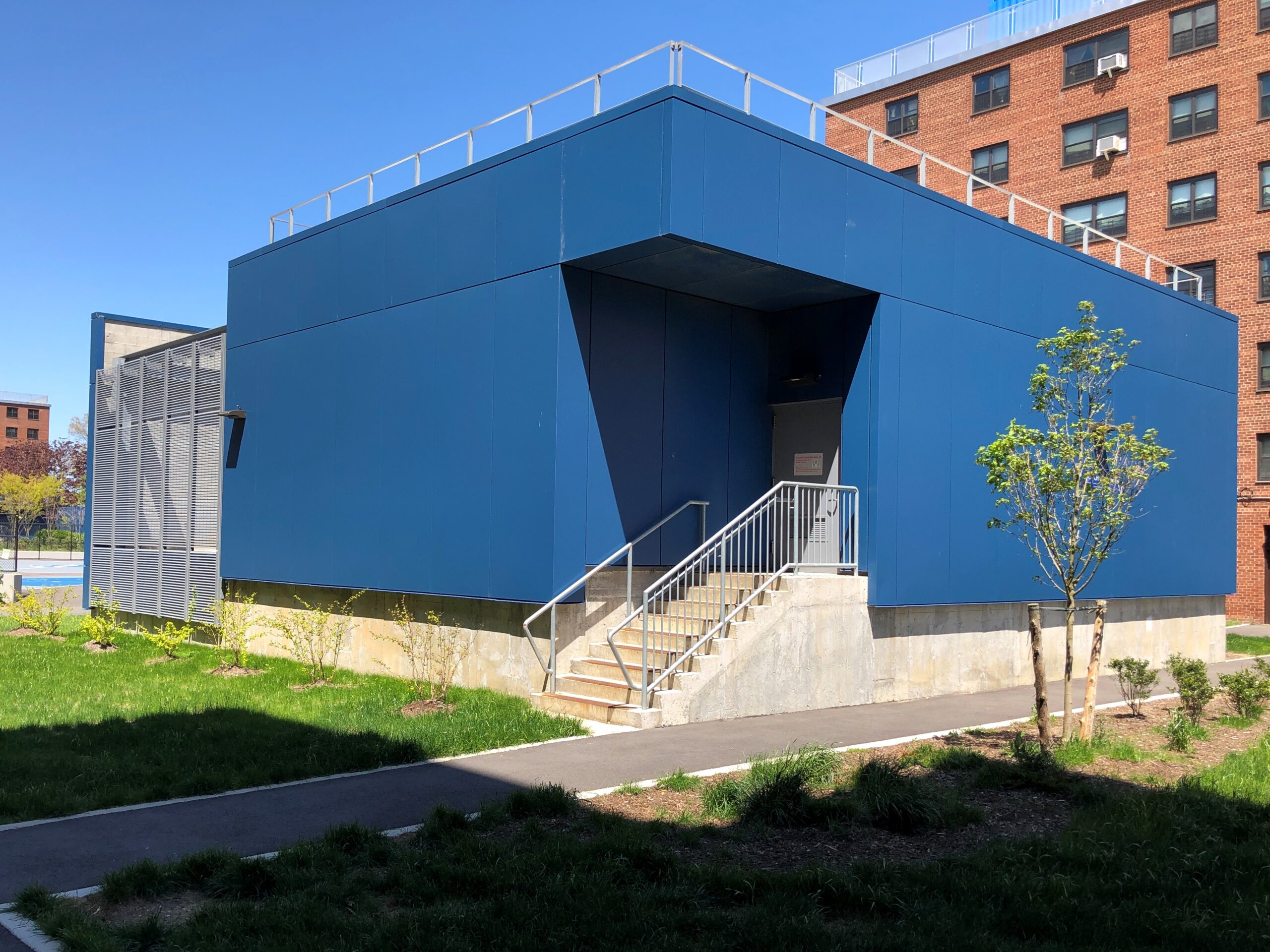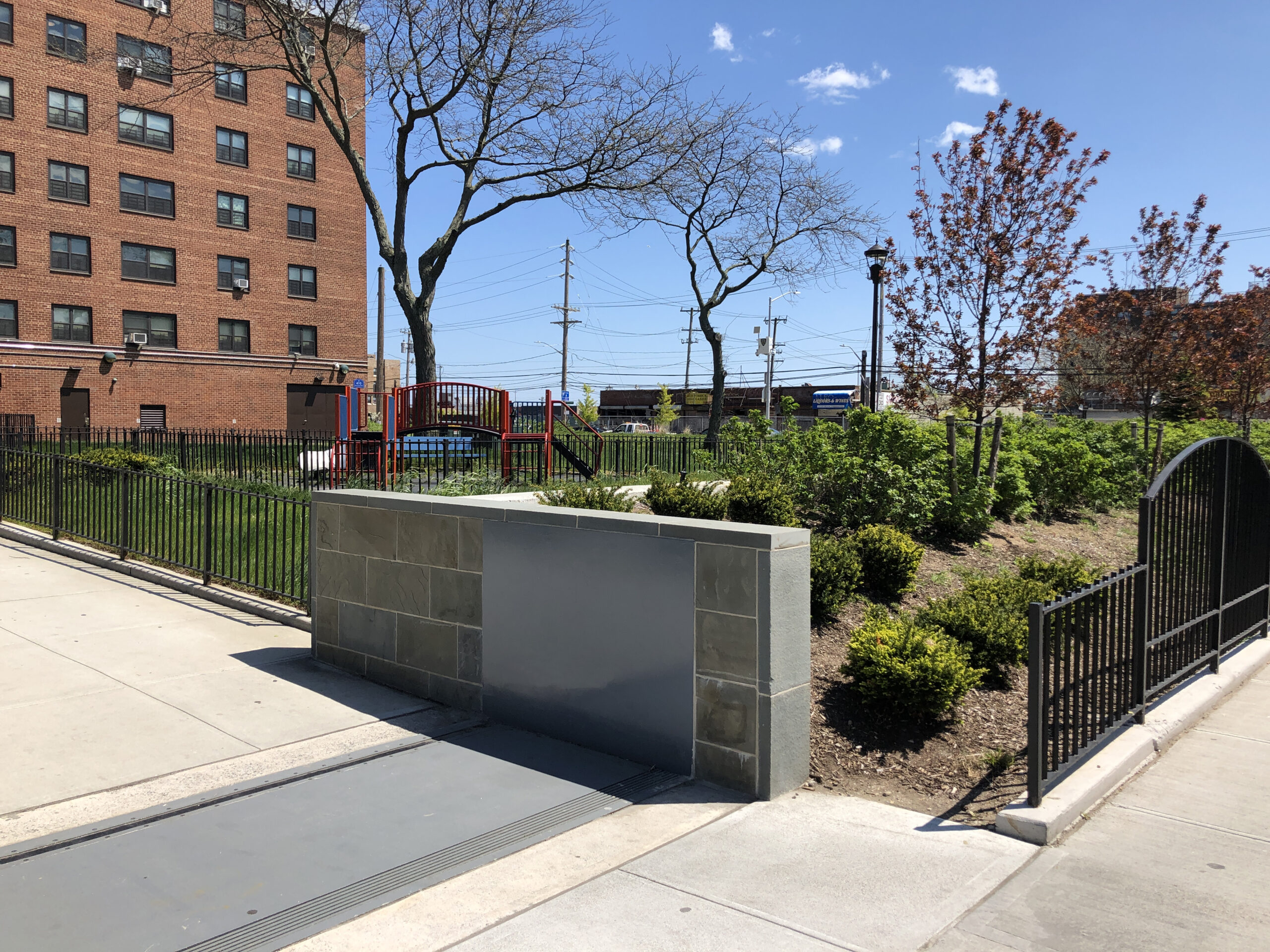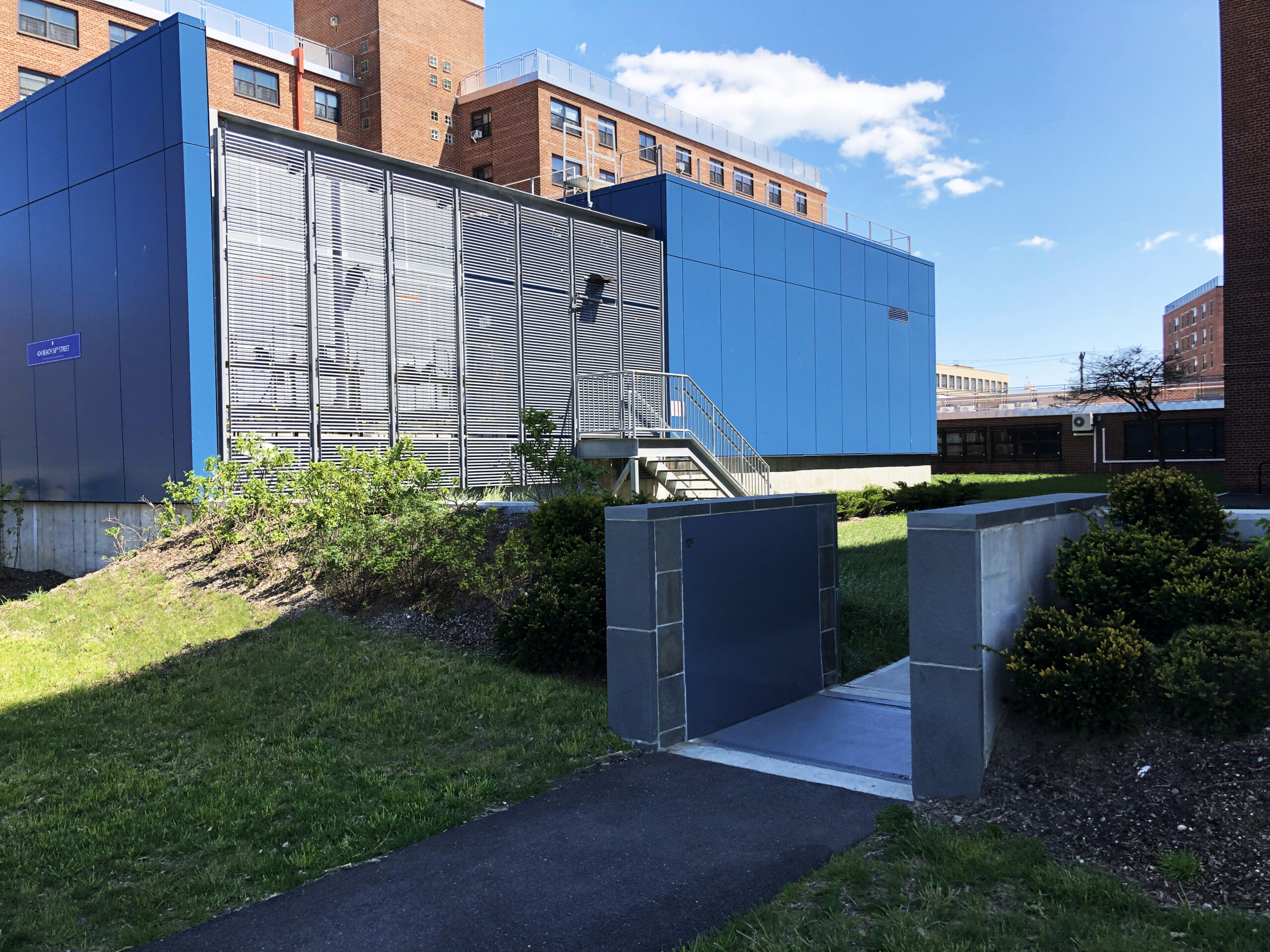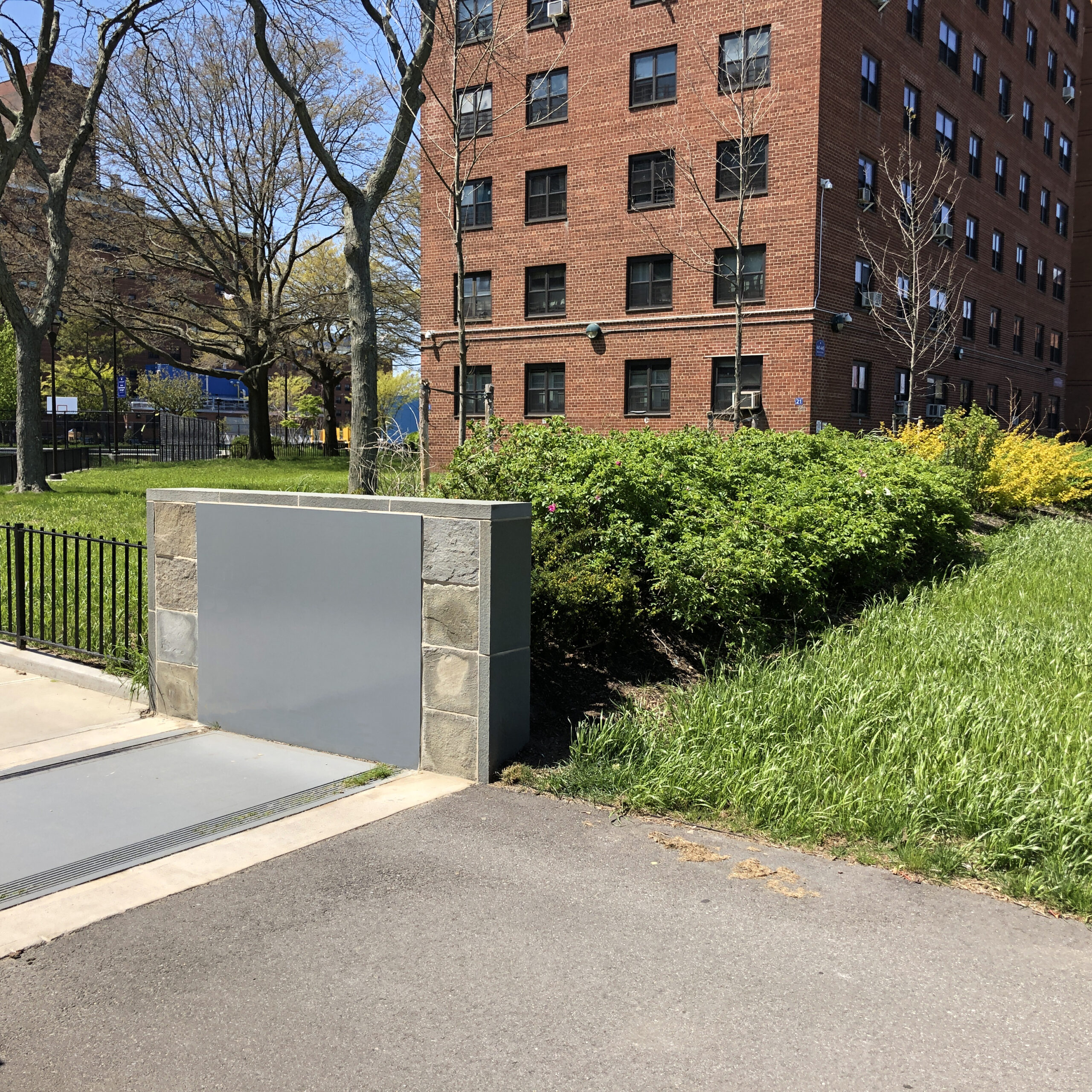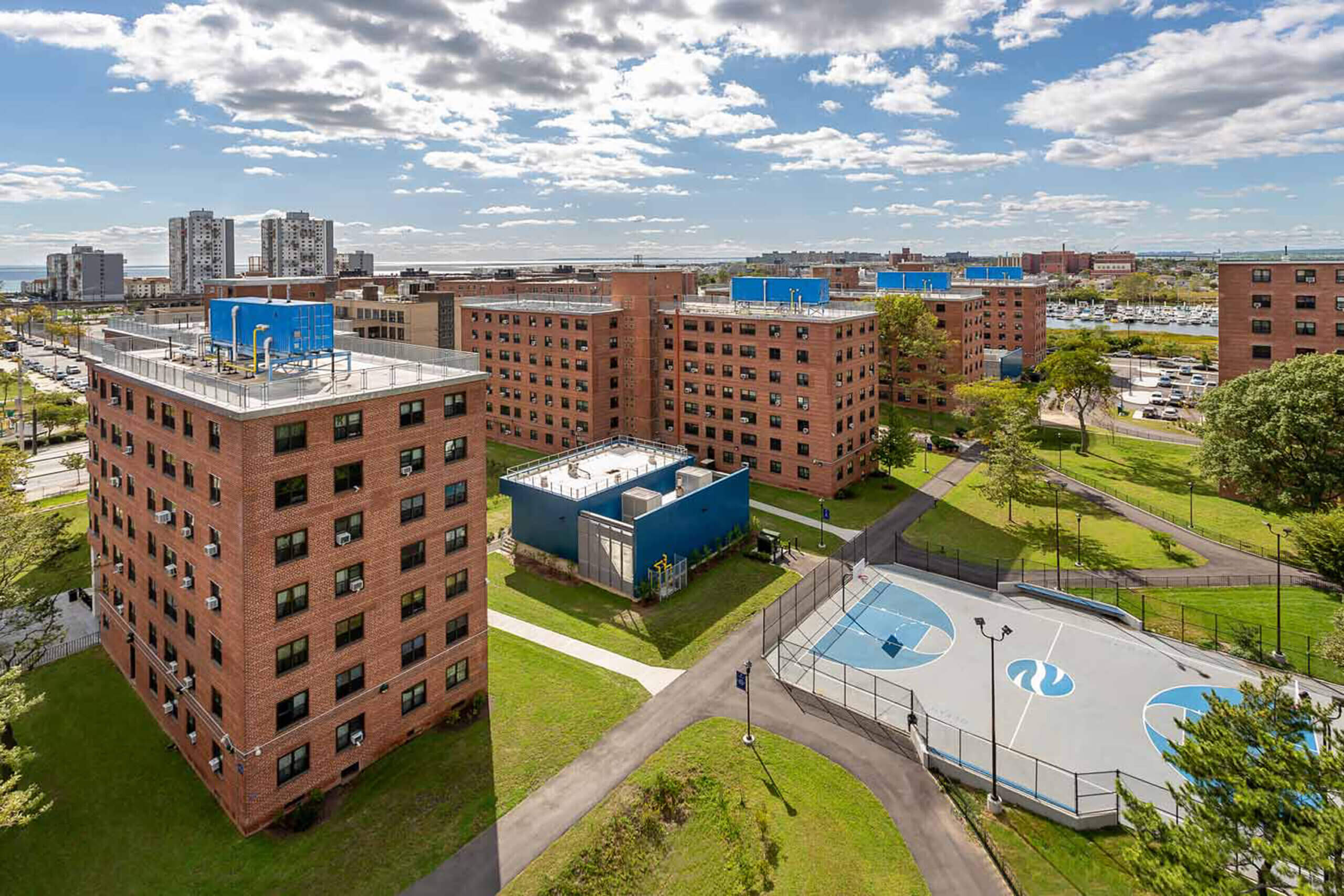
Ocean Bay Apartment (Bayside) Sandy Resiliency & Renewal Program,
In the aftermath of Hurricane Sandy in 2013 NYCHA embarked on a recovery program by performing extensive building damage assessments, installing temporary electrical switchgear, and temporary mobile boilers to restore the habitability of the residential buildings in the most severely affected developments. NYCHA is now in the second phase, the long-term “Sandy Resiliency & Renewal Program”. MDSA provided architectural services along with its team of engineering consultants to design permanent solutions to prevent future damage from hurricane or flooding events at the Ocean Bay Apartments (Bayside) housing complex.
The Ocean Bay Apartments (Bayside) complex is comprised of 24 apartment buildings with 1,395 apartments providing housing for over 6,000 residents located on a 32-acre site. The complex consists of twenty 7-story buildings around the perimeter of two city blocks, and four 9-story buildings centrally located within the sites.
The program is developed to provide flood protection of the site, following FEMA-prescribed requirements, for primary electric service, residential building envelope (dry and wet floodproofing), and building entries. The solution involves the following major elements –
• A perimeter flood wall, over 5,200 feet in length, that encircles the 32-acre site to prevent surface flood waters from entering above grade, and prevent subsurface water seepage below grade. The flood walls are visually hidden through use of sloped berms of the adjacent finish grade.
• Where the building entries face streets, protective flood walls and panels for the lobbies.
• A series of pedestrian and vehicular passive flood panels installed in the ground that automatically raise during a flood event to prevent water infiltration into the site. These panels are integrated with the flood walls.
• A series of single story buildings whose floor elevations are above the FEMA design flood elevations located throughout the site, containing new building electric service and standby emergency generators that will provide full electric capacity for the complex should power be disrupted.
Size: 32-acre site
Cost: $222 million

